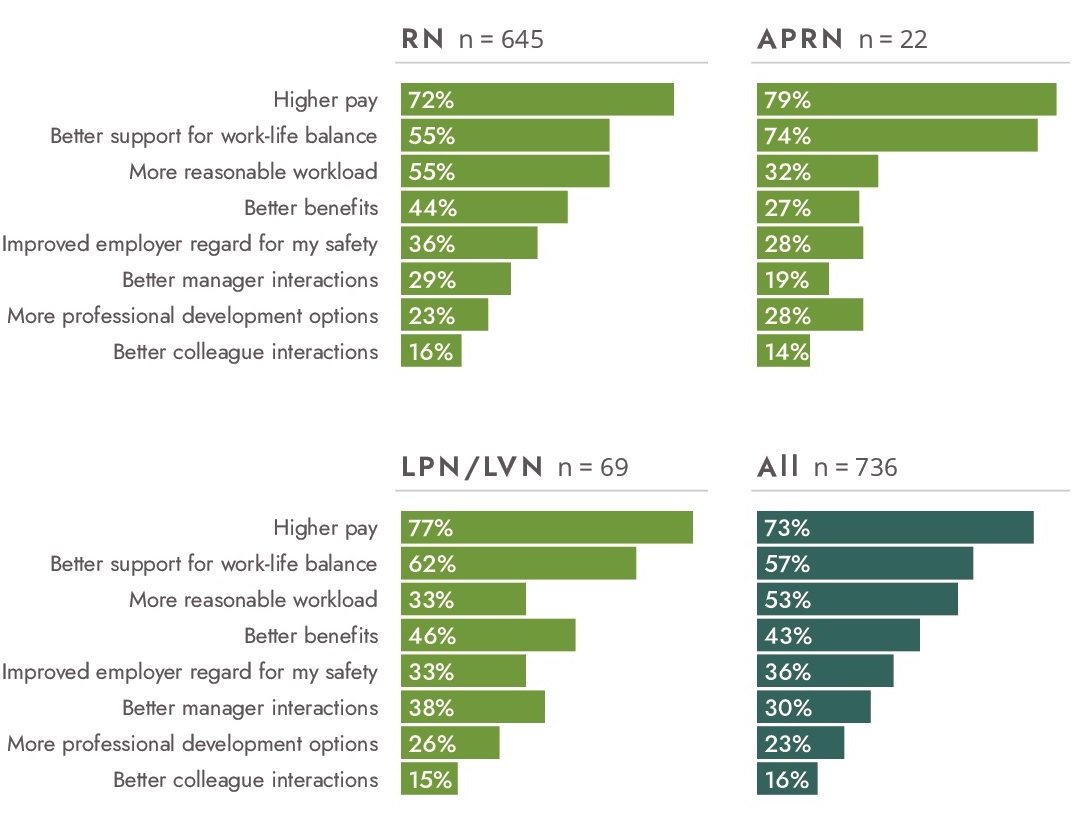What Impacts Nurses Either Staying or Leaving?
Nursing shortages have reached crisis levels. The current instability of the nursing workforce also reflects and contributes to the pandemic’s toll on nurses. Nursing staff shortages are nothing new, but the pandemic has made the problem much worse. A few sobering statistics:
- The vacancy rate for registered nurses was almost 10% in 2020, almost a full point higher than the prior year. Over a third of hospitals reported a vacancy rate higher than 10%.
- Nurse turnover rates are increasing, standing at about 22% in 2021, compared to 18% in 2019.
- It takes an average of three months to recruit a qualified nurse to fill a vacancy, a period that is expected to increase in the wake of the disruptions caused by COVID-19.
In a survey conducted by the American Organization for Nursing Leadership (AONL) in August 2021, 75% of nurse leaders indicated that the emotional health and well-being of their staff is their top challenge. Among nurse leaders themselves, 25% said they are not emotionally healthy, with nurse managers particularly at risk — 36% of this group reported that they are not emotionally healthy.
Analysis of the Nursing Workforce
Another survey conducted by 2,516 qualified nurses was developed for registered nurses (RNs), advanced practice registered nurses (APRNs), and licensed practical/vocational nurses (LPNs/LVNs) across the country.
The Nurse.com 2022 Nurse Salary Research Report took a deeper look to assess:
- salary,
- benefits,
- education, and more.
Nurses can use this information in this report to see how your current salary and benefits compare with those of your peers with similar education and job titles.
Regional Salary Breakdown

Source: Nurse.com
Factors That Would Motivate Nurses to Stay in Their Profession

Source: Nurse.com
Download the full 2022 Nurse Salary Research Report.
The Remington Report team is a talented pool of researchers, analysts, and knowledge seekers providing excellence in home care content.


